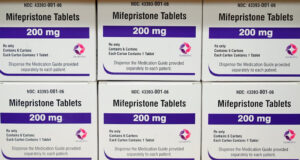With viral hemorrhagic fevers like Ebola and Marburg posing severe threats, a new laboratory toolkit promises to enhance early detection and containment, empowering frontline healthcare workers to save lives and limit the spread of these lethal diseases.
 Study: Enabling laboratory readiness and preparedness for the evaluation of suspected viral hemorrhagic fevers: development of a laboratory toolkit. Image Credit: PreciousJ / Shutterstock.com
Study: Enabling laboratory readiness and preparedness for the evaluation of suspected viral hemorrhagic fevers: development of a laboratory toolkit. Image Credit: PreciousJ / Shutterstock.com
In a recent study published in Infection Control & Hospital Epidemiology, researchers develop a laboratory toolkit to assist frontline healthcare facilities in providing basic laboratory testing required for the care of patients with suspected viral hemorrhagic fevers (VHFs).
What are VHFs?
VHFs, such as Ebola virus disease, Marburg virus disease, and Lassa fever, are highly contagious infectious diseases that are associated with significant morbidity and mortality. Thus, the rapid detection and isolation of individuals with suspected VHF is imperative to prevent further transmission.
In the United States, frontline healthcare facilities often face challenges in identifying and isolating patients suspected of having VHFs due to the low prevalence and non-specific symptoms of these illnesses. These factors also contribute to the lack of established laboratory protocols available for routinely testing patients for these diseases and minimizing the risk of workplace exposure in the event of a positive sample.
As a result, most suspected patients evaluated in American healthcare facilities get an alternative diagnosis. This failure to accurately diagnose VHFs increases the risk of exposing the surrounding community to these pathogens, as well as patient morbidity and mortality. For example, delayed malaria diagnosis and treatment has been found to significantly increase the risk of mortality in the U.S.
Laboratory toolkit development
In the current study, researchers from the Massachusetts General Hospital developed a Laboratory Testing Toolkit for suspected VHF patients to support regional preparedness through evidence-based approaches, innovative tools, and education.
The Clinical Laboratory Improvement Amendments (CLIA) quality standards for laboratory testing, public health guidance from the U.S. Centers for Disease Control and Prevention (CDC), internal standard operating procedures, and established resources were used to develop the Toolkit. Moreover, the Toolkit consists of two main components including a base plan outlining facility-level planning of initial laboratory testing of a suspect VHF patient and an appendix of adaptable resources such as checklists, templates, and other resources to facilitate local adoption.
All components of the laboratory testing process ranging from sample collection and laboratory testing to test results reporting were addressed during development. The Toolkit also includes infection prevention and control measures, such as personal protective equipment, cleaning, disinfection, and waste management.
The Toolkit was screened repeatedly by subject matter experts using a Plan-Do-Study-Act framework. The utility and completeness of the Toolkit were assessed by collecting feedback from various end-users. The researchers subsequently distributed the Toolkit to acute care facilities within the Mass General Brigham (MGB) healthcare system in the winter of 2023-2024.
What is included in the Toolkit?
The Toolkit summarizes best laboratory practices across all stages of the testing process to reduce the burden placed on frontline healthcare facilities to independently develop processes and procedures.
Templated checklists and other documents provided by the Toolkit can be adopted and modified for local settings. This ensures that safe practices are maintained in clinical laboratories while also facilitating the timely delivery of critical test results to clinicians.
The Toolkit provides detailed information on the minimum laboratory testing necessary for safe and supportive care of suspected VHF patients before ruling out VHF diagnosis or transfering the patients to a higher level of care.
The U.S. CDC currently recommends various clinical laboratory tests for the evaluation of a suspect VHF patient, including immediate blood smears with same-day results for malaria testing, complete blood count (CBC) with differential, liver function tests, coagulation testing, urinalysis, and blood cultures. However, most frontline clinical laboratories do not have the infrastructure or resources to perform these tests on site.
Of the tests recommended by the CDC, the Toolkit includes only basic chemistry, electrolyte, and rapid malaria testing as essential procedures for frontline laboratories, as severe electrolyte imbalances and untreated falciparum malaria can be life-threatening.
Limitations of the Toolkit
Despite developing the Toolkit to facilitate initial laboratory testing of suspect VHF patients, the researchers identify certain limitations that frontline clinical laboratories must consider.
Although rapid malaria testing can be performed using the commercially available BinaxNOW Malaria test, most clinical laboratories do not routinely perform this test because of the low prevalence of malaria in the United States. This can interfere with the test verification process, which is typically performed by testing well-characterized clinical samples.
The Toolkit does not provide information on verification protocols, laboratory test training, proficiency testing, or competency assessment. Thus, individual clinical laboratories should establish necessary procedures for these items prior to patient testing and reporting.
Overall, the toolkit is expected to improve laboratory preparedness and readiness in the initial care of suspect VHF patients who may present to acute care hospitals.
Journal reference:
- Turbett, S. E., Lazarus, J. E., Nardini, M. A., et al. (2024). Enabling laboratory readiness and preparedness for the evaluation of suspected viral hemorrhagic fevers: development of a laboratory toolkit. Infection Control & Hospital Epidemiology. doi:10.1017/ice.2024.143




